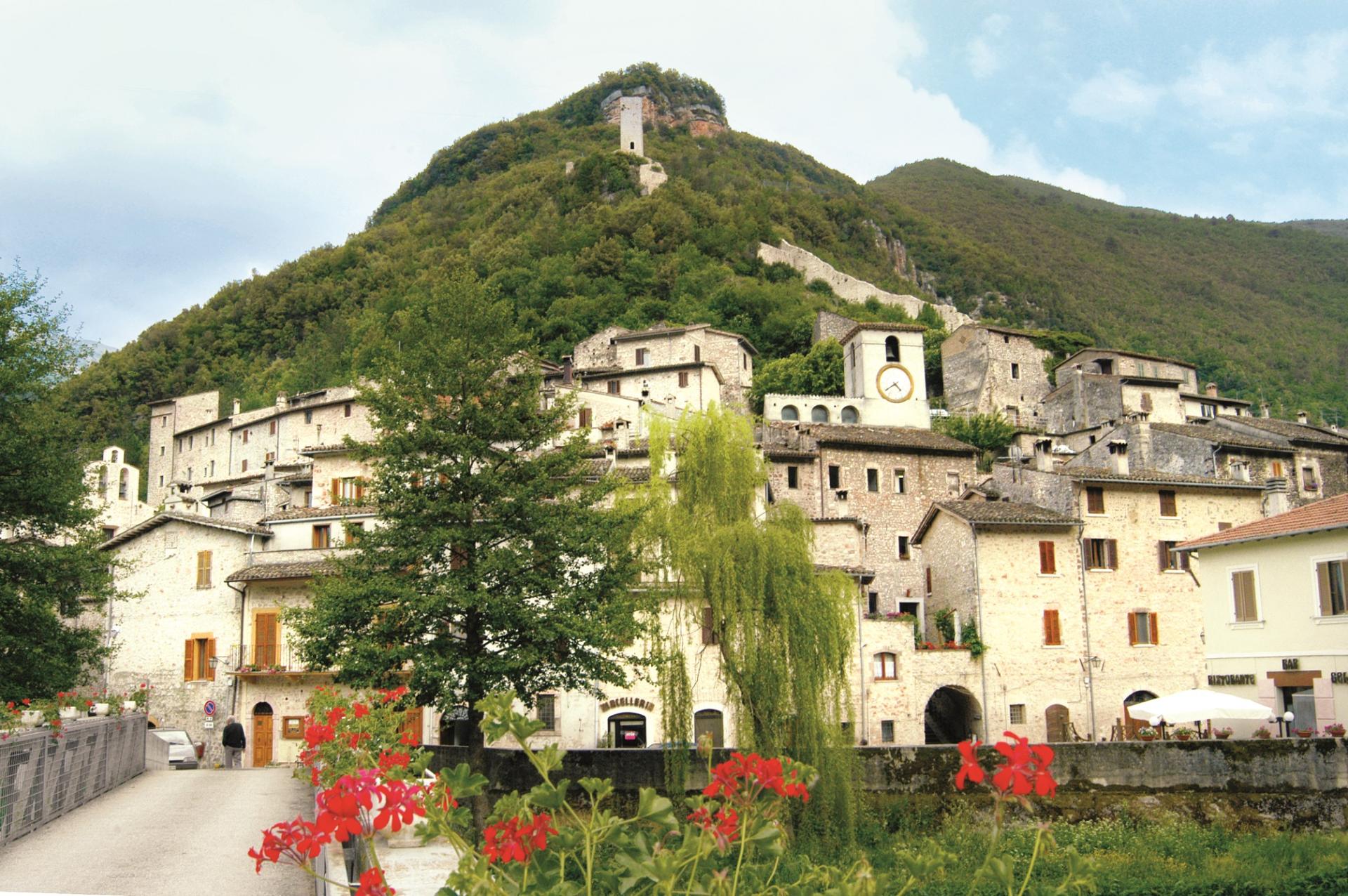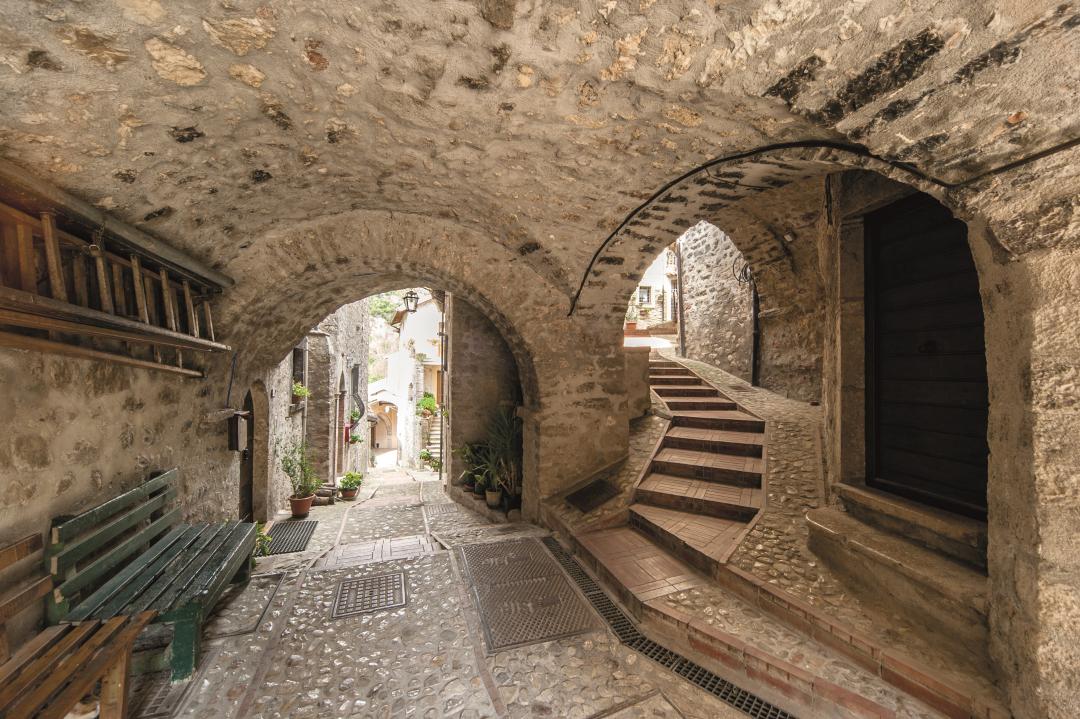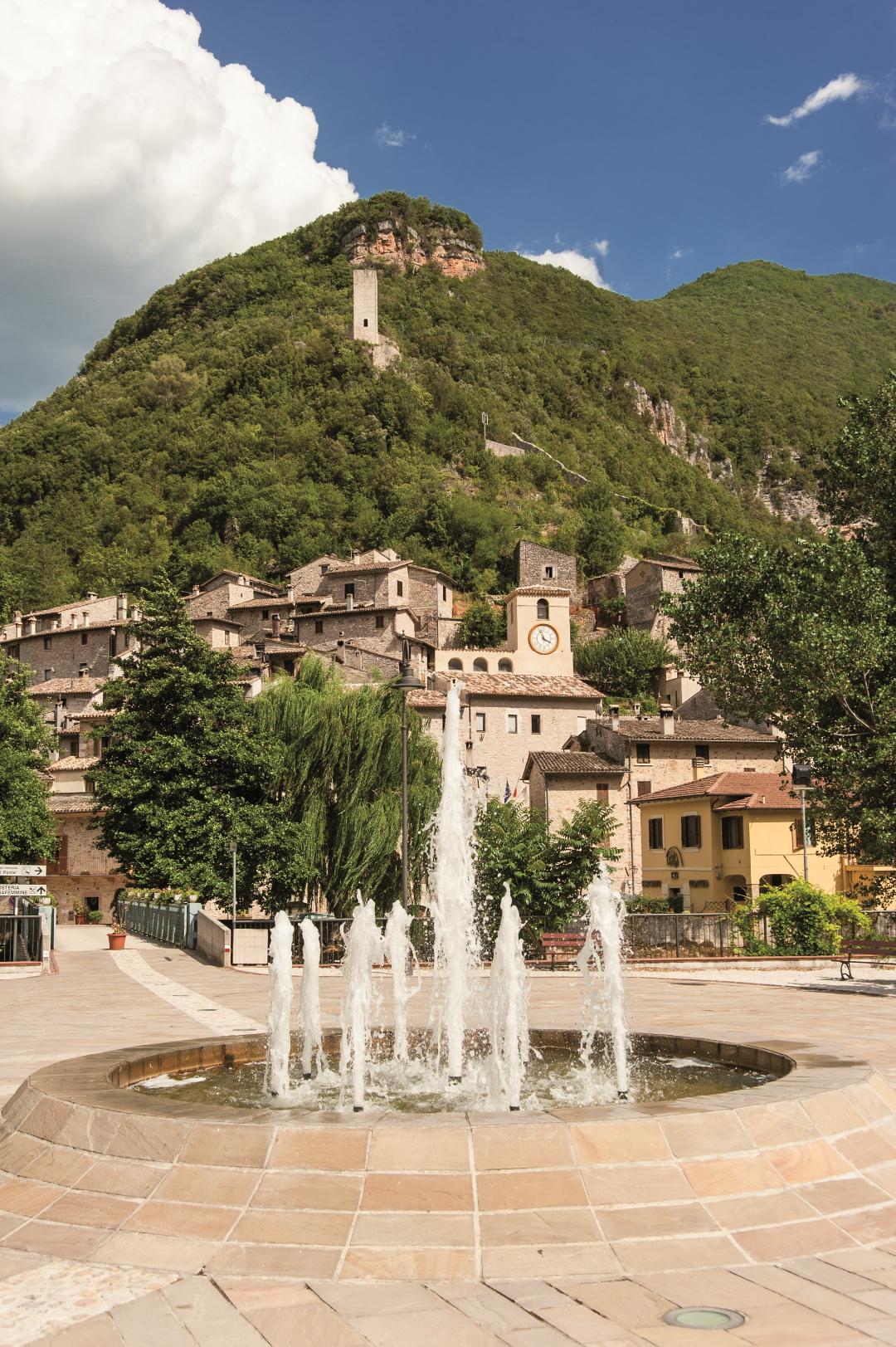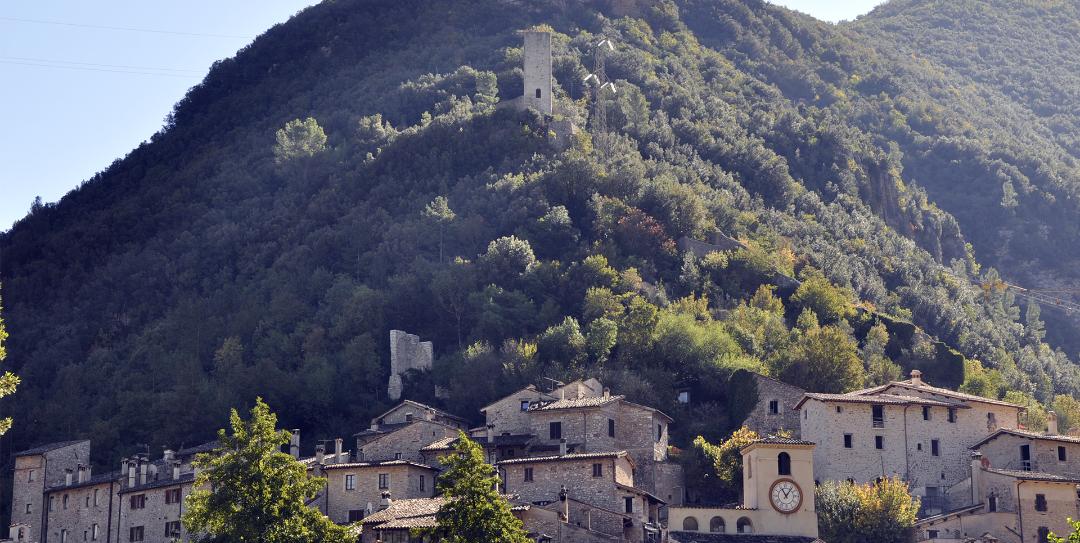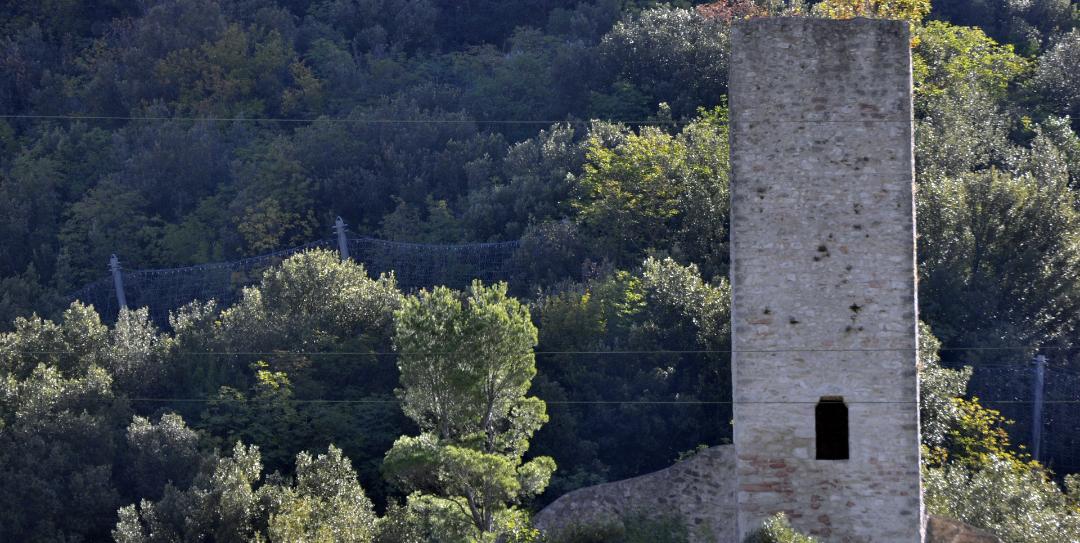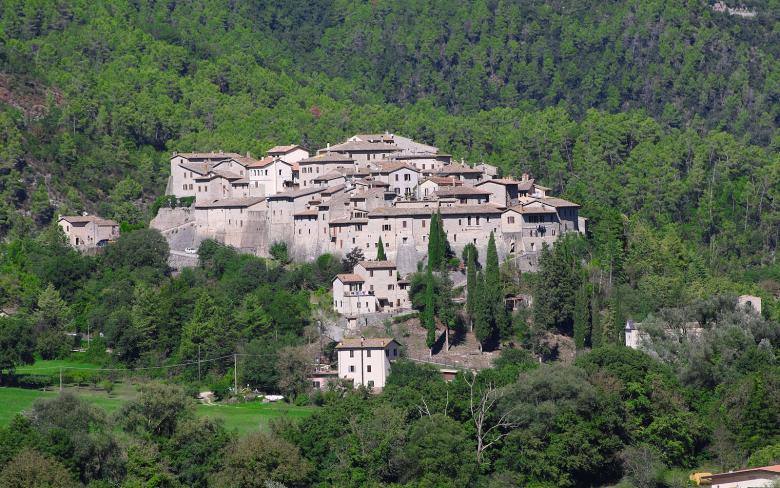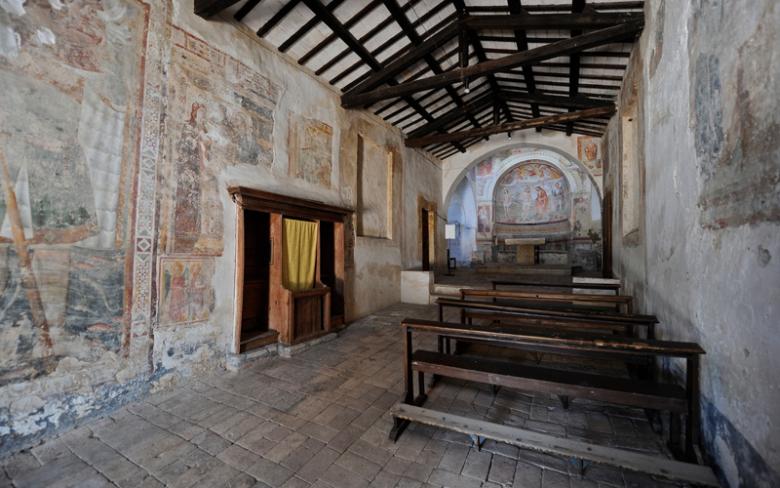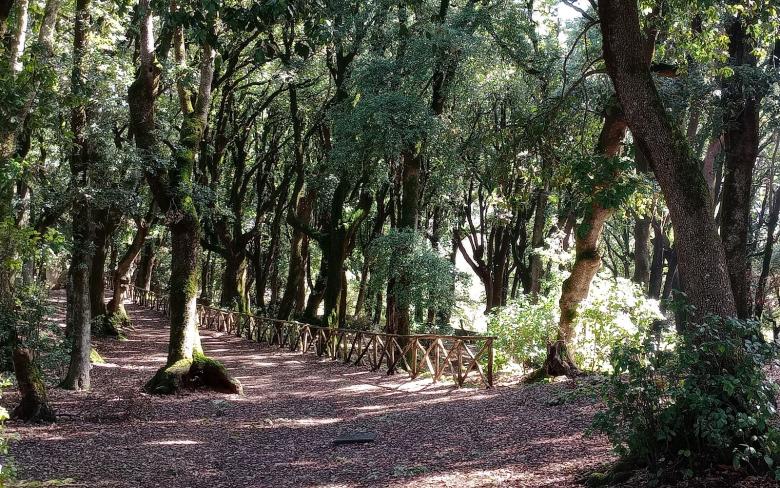The village presents particular buildings such as Graziani Palace, a manor residence of the 18th century built near the first circle of walls and one of the angular towers, and the Town Hall, established in a singular building of the 17th century, characterized by a mansard floor or covered lodge, intended for public use, with the rising right side of a modern civic tower provided with a clock and bells. The municipal historical archive preserves documents of the Scheggino municipality from the 14th century and of the suppressed municipalities of Ceselli, Civitella and Mount St. Vito. At the southern extremity of the Via di Borgo you can find, on the ancient Valnerina road in the direction of Osteria di Ceselli, the 17th century Gate of the Well, so called for the presence of a spring.
On the opposite side of the road you can find Profili Palace, a typical 18th century palace currently divided into different apartments. The building, recently restored and still housing the main portal, the entrance atrium, the courtyard with Nymphaeum and the stairs to access the upper floors, originally included also a garden in the area in front of the building, a greenhouse and a fishpond. Under a wing of the Profili Palace is the 16th century Valcasana gate, which was the starting point of a section of the “Iron Road”, that is the road used to transport materials of the mines and ironworks, which ran from Scheggino to Monteleone di Spoleto through Caso and Gavelli.
The road was upgraded in the 17th century, under the pontificate of Urban VIII, thanks to the good offices of the Cardinal Fausto Poli of Usigni. The area outside the Valcasana Gate is rich with spring waters and water vegetation, so much so that it has been a public park since the early 19th century.
Source: http://www.comunescheggino.it/
























